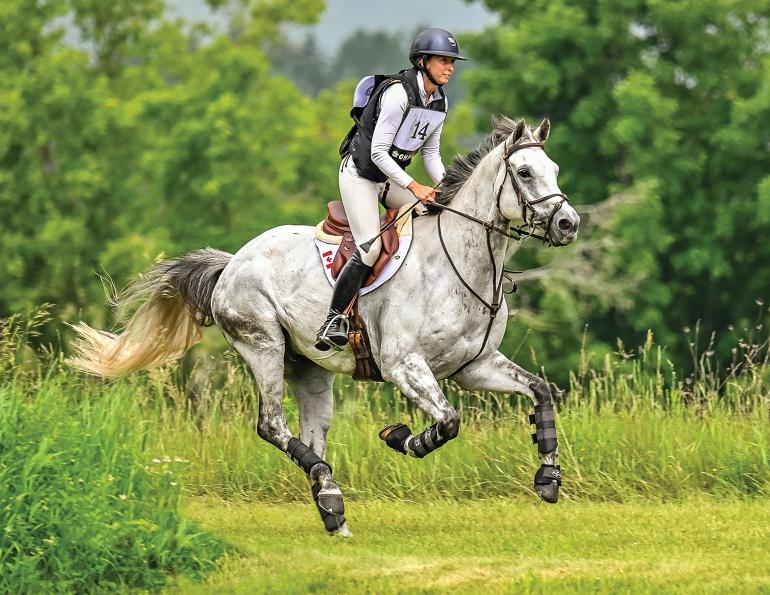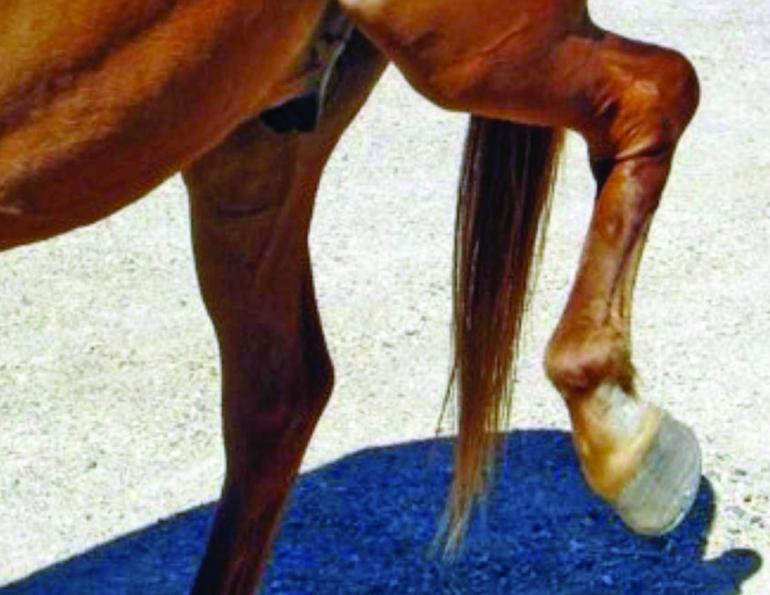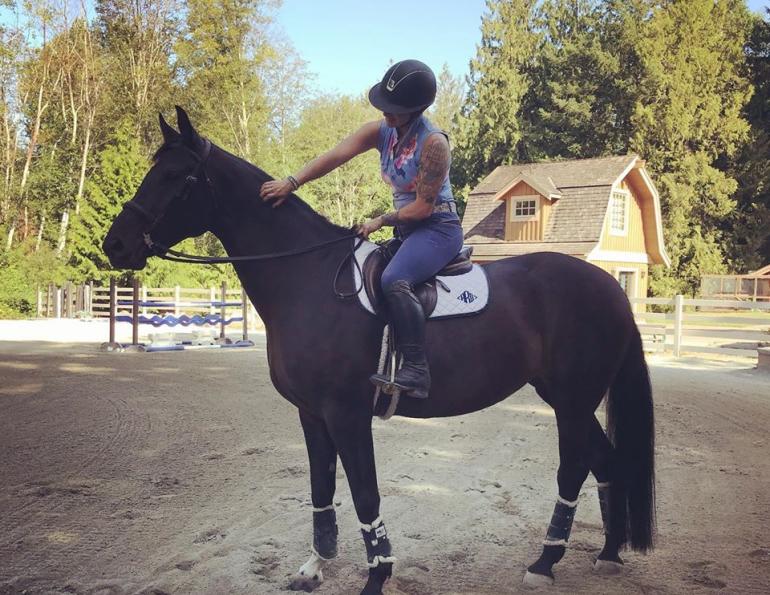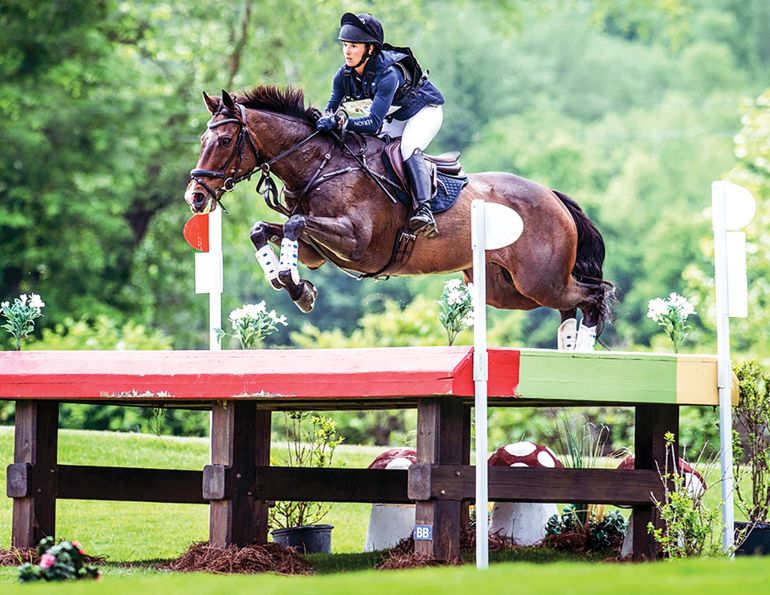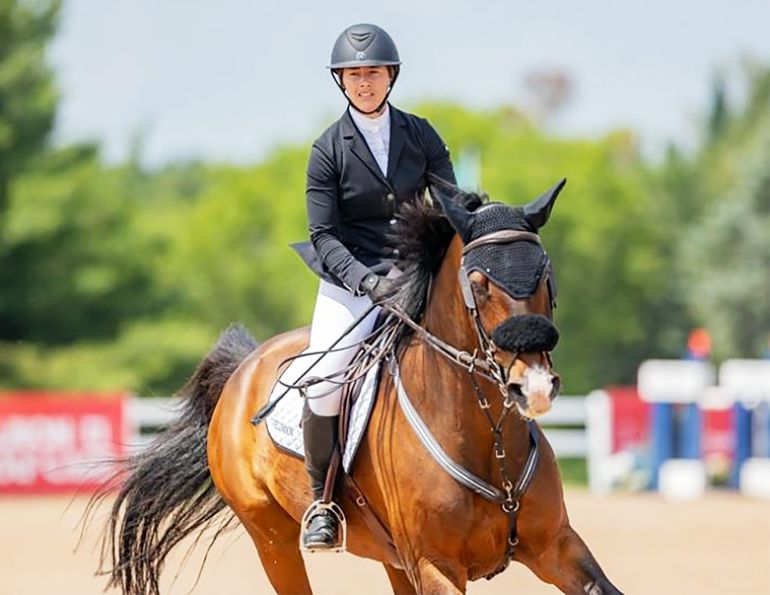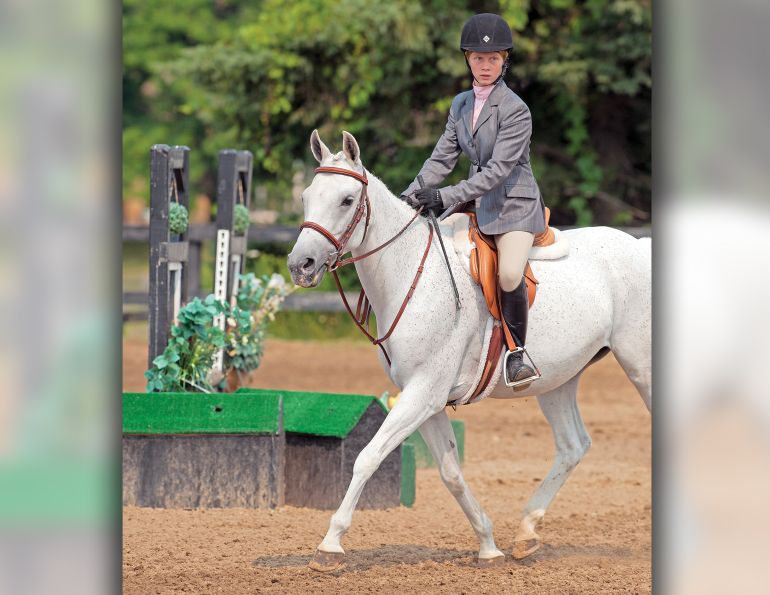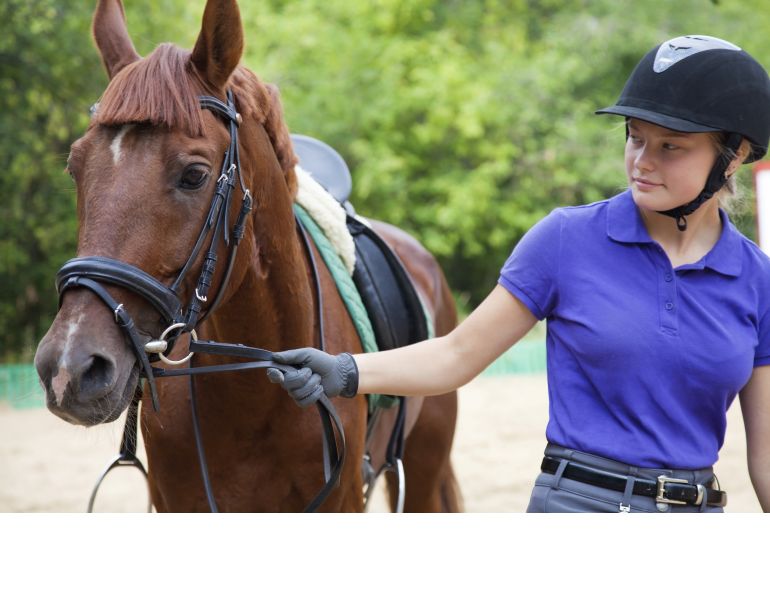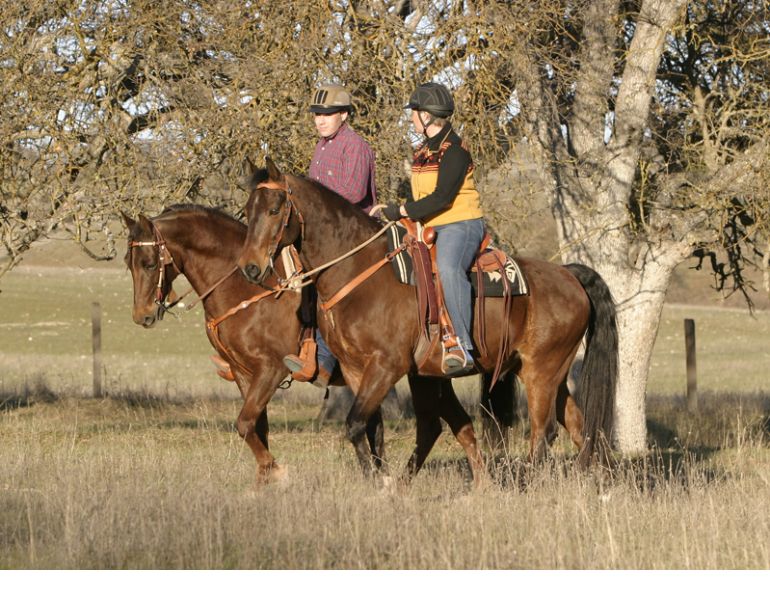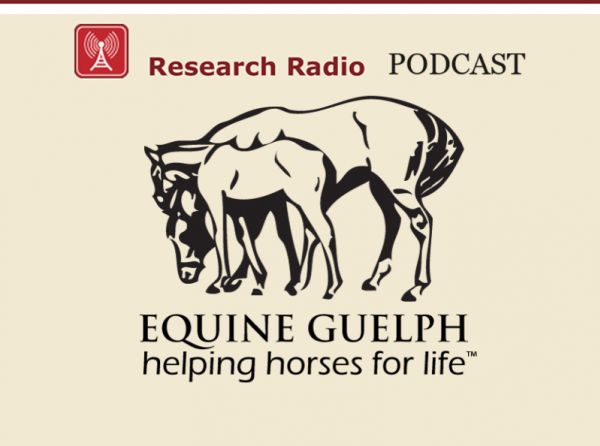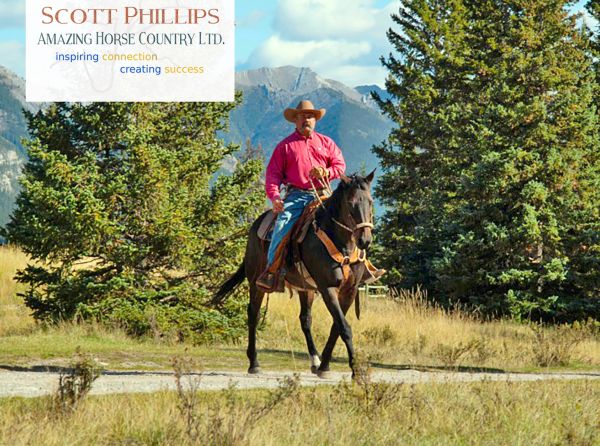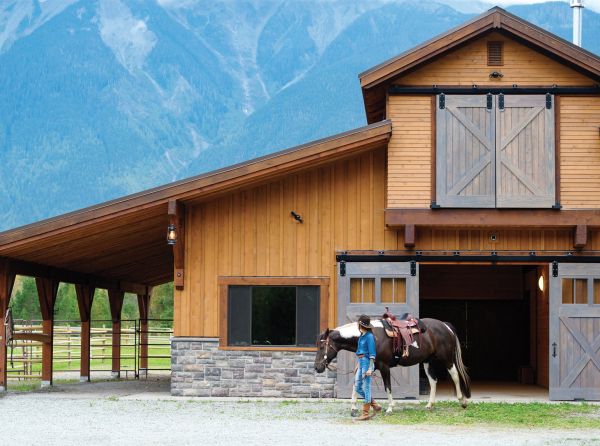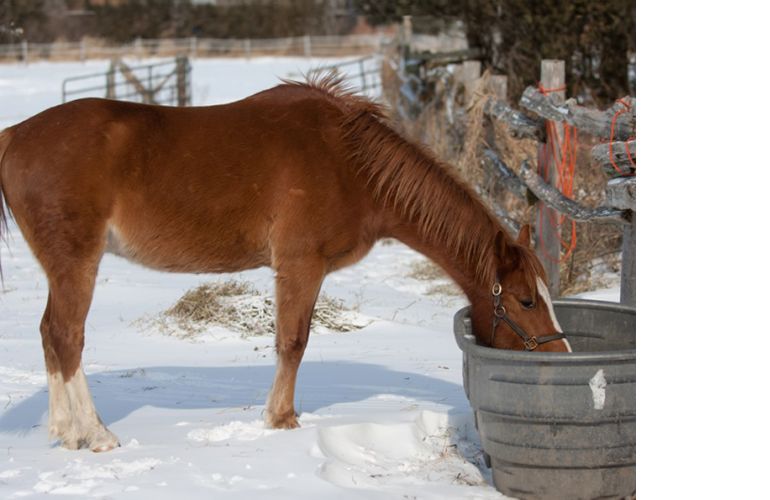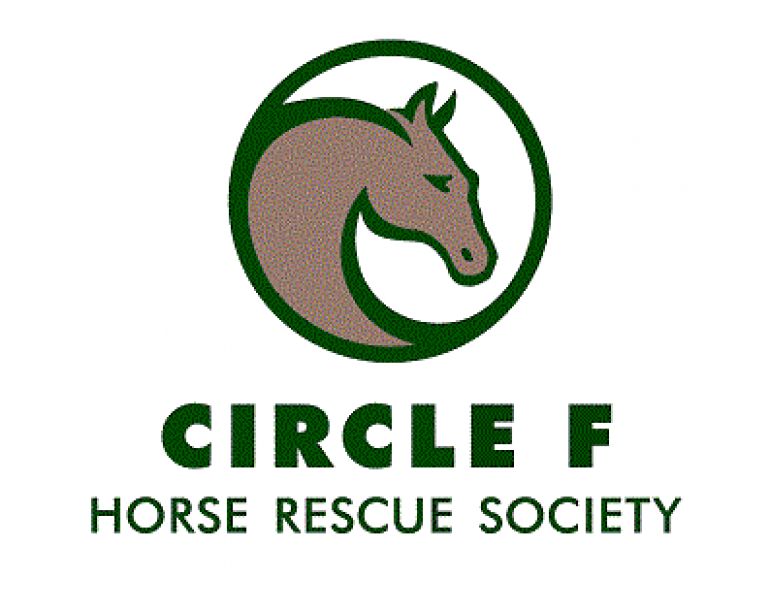By Tania Millen, BSc, MJ
Canada is a massive country, with large distances between equine competitions and a relatively small number of upper-level equestrians. Hence, Canadian riders who want to be competitive at upper levels struggle to find enough higher-level competitions to advance their riding careers. Canada also has winter weather that precludes many riders from training outside for half the year. This can limit advancement and horse fitness. For example, three-day event riders can’t school cross-country jumps or get their gallop training in when fields are drifted with snow, nor can endurance riders do long rides on varied terrain.
To address these challenges, some riders choose to travel to the United States (US) or overseas to train and compete. Others may move to the US or Europe for all or part of the year. But those decisions have their own challenges. I spoke with three riders who’ve struggled with these choices to understand the Canadian-specific challenges of those wanting to pursue horse sport excellence.
Traveling is Mandatory
Kendal Lehari is a Canadian three-day eventing rider based in Uxbridge, Ontario and considers travelling outside of Canada to train and compete a necessity. Due to Canada’s long winters, Lehari explains that it’s difficult to get horses fit enough for higher level competition without travelling south of the border.
Related: Canadian Pony Club: Then and Now

Kendal Lehari and Mitchell on cross-country. She says competing in the US and Europe against so many good riders is both intimidating and inspiring. “It lights a fire under you to train a bit harder.” Photo: Cealy Tetley
“If we have winter until mid-April, riders have to go south for at least a little bit to get their upper-level horses fit for spring events,” she says.
“You can stay in Canada to train and compete at two-star level,” says Lehari. “At three-star level it depends on which event you’re aiming for. It’s a little easier to prepare for a fall three-star when based in Canada, but if you’re aiming for a spring three-star you really have to be based in the US.
Related: Finding Paths to Success for Equestrian Youth
“Plus, you can’t qualify for a CCI**** in Canada anymore, so you have to go to the US for that,” says Lehari.
However, even in the US, the number of upper-level competitions is limited. Riders from Canada may have to travel significant distances, such as to Florida or California, to event at high levels.
“It’s pretty difficult for Canadian eventers,” Lehari says.
In August, 2023 Lehari was a member of Canada’s Nation’s Cup Three-Day Eventing Team that competed in Arville, Belgium. She then chose to stay in England to train and compete before returning to Canada in the fall.

Kendal Lehari and Mitchell show jumping. If you want to advance, travelling outside of Canada to train and compete is a necessity, she says. Photo: Cealy Tetley
“In North America a 60-rider class is huge,” says Lehari. “In England, they’ll have one division with two or three groups of 100 to 200 riders. There are just so many horses and riders that are really good.”
Related: How to Find the Money for Horse Sports
Lehari also explained that in England, there are nearby competitions every weekend, so riders don’t have to take a week off work, drive hundreds of kilometres, and deal with an international border crossing just to go to an upper-level event.
“There’s a lot on the line every time Canadians go to a competition in the US,” says Lehari.
If something goes wrong, whether it’s rider error or a horse mishap, rerouting to another big event isn’t easy in North America. Riders may have to wait months to attend a similar-level event, which can be costly in time, money, and the ability to develop horses up the levels.
For these reasons, riding in Europe is valuable for Canadian event riders wanting to advance.
“It’s easy to think you’re very good if you only compete in Canada,” says Lehari. “But when you go to your first US event you get a little star-struck. It’s the same overseas. All the people you’ve seen on TV — riders who have won the Olympics and five-stars — are all warming up around you. It’s good to see what you’re up against.”
That can be intimidating but also inspiring.
“It lights a fire under you to train a bit harder,” she says. “You learn what you’re training towards.”
However, traveling internationally with horses is expensive, whether it’s to the US or to Europe.
“To pack up and leave for four months every year or leave for one week every month to go to the US? It’s a huge financial burden and is hard on your family,” says Lehari.
It cost well over $50,000 for Lehari to fly two horses to Europe in 2023, pay commercial trailering fees between events, and compete and train there for a few months.
Related: Grooming Horses at the Top
“There’s a certain point where — as a professional or an amateur — you have to decide if that travel is worth it,” says Lehari. “If you have the right horse, maybe it’s the right time to make a commitment and train somewhere else for a bit.
“You have to be realistic,” she adds, explaining that sometimes riders are better off choosing to be happy where they’re at and pursue eventing as a fun hobby.
Lehari is part of Canada’s 2024 Eventing High Performance Squad and is a certified Equestrian Canada high performance coach. She has no plans to leave Canada, but says her 2023 overseas experience was really valuable.
“I’d like to go back to Europe for a month or so to compete at a couple of events, then do a big four- or five-star,” says Lehari. “But Ocala, Florida is well-suited for training in the winter. So, I’ll probably be sticking to that route while my bank account recovers.”
Staying Home, For Now
Cost is one of the reasons Tracy Vollman is staying home in Shelburne, Saskatchewan this year. She was the alternate for Canada’s World Equestrian Games Endurance Team in 2018 and has spent many years travelling to the US to train and compete.
“If you’re going to ride at upper levels now, you have no choice but to travel,” says Vollman.
Endurance riders and horses have to complete a certain number of competitions over specific distances to qualify for the next distance category. The longest races are 160 kilometres or 100 miles, and training for that length of race is a year-round endeavour.

Endurance rider Tracy Vollman believes to be competitive at the upper levels, riders have no choice but to travel to the US to train and compete, as she did for many years. Photo: Becky Pearman
“If you stay in Canada in winter, you’re not ready for the distance,” says Vollman. “We used to go to Florida in November and come back in the spring.”
Related: Parenting for Horse Professionals
The lack of competitions available in Canada is a problem, too.
“Since COVID, we don’t have any 100-mile FEI [International Equestrian Federation] endurance races in Canada,” says Vollman.
That means riders trying to develop horses and qualify for upper-level competitions or Canadian Teams must travel to, or be based in, the US or Europe.

Saskatchewan’s Tracy Vollman will not be competing outside of Canada this year, largely due to cost. Photo: Becky Pearman
“In order to get those qualifications, you have to go south,” says Vollman. “Montana used to have an FEI ride but 2023 was their last year. So, now the closest FEI rides are in California, South Carolina, or Florida.
“That’s why we don’t often have a Canadian endurance team,” explains Vollman. “It’s too hard to keep the horses going over the winter unless you go south, and that gets really costly.
“If there were more FEI rides in Canada, I would definitely still be competing at that level,” says Vollman. “It just doesn’t make financial sense right now.”
Playing in a Bigger Pond
For some, it makes more sense to move away from Canada, permanently.
Jim Greendyk grew up in Canada and spent over 20 years operating Jim Greendyk Performance Horses, starting young horses, developing reining horses, and coaching riders in British Columbia and Alberta. He’s originally American and moving back to the US was never far from his mind.
Related: Pony Club - Incubating Canada's High-Performance Riders
“It was always clear to me that if I was going to challenge myself against the best guys in the world, I’d have to move south at some point, to one of the hotbeds of horse training,” says Greendyk.
In 2023, he did just that, choosing to purchase property and settle in Scottsdale, Arizona.
“It was always my goal to own the property that I worked on,” says Greendyk. However, the high prices of properties in Canada’s horse communities was limiting. There are places in Canada where land is cheaper, but those areas aren’t generally conducive to developing a high-end horse training and coaching business.
“It became inevitable that we were going to move someplace where there were more business opportunities, the weather was conducive to training year-round, and we were closer to shows,” says Greendyk.

Already a successful reining trainer, coach, and competitor for 20 years, in 2023 Jim Greendyk relocated from Chilliwack, BC to Scottsdale, Arizona in a quest to keep challenging himself against the highest-calibre riders. “You have to be really careful that you don’t get comfortable with your comfort zone,” he says. Photo: Kristina Lynn Photography
Although lots of people are happy being a big fish in a small pond, Greendyk feels differently.
“If you’re a small fish in a big pond, you can have a small place and specialize in one portion of the market,” explains Greendyk. “Plus, you can work for someone else if you decide you don’t want to do it on your own.”
After moving his family and business to Arizona, Greendyk says he’s had multiple client referrals from neighbouring trainers in his first five weeks of operating.

Now surrounded by some of the best riders in the world, Greendyk is encouraged to step up his game. “I want to be the best version of myself. That’s what I keep chasing.” Photo: GK Photography
“There’s real camaraderie between trainers, families, and riders,” says Greendyk. “It’s a tight-knit community. Within a 15-kilometre radius you can find hundreds of top-end cutters and reiners.”
Due to the prevalence of top riders, it’s easy for Greendyk to get help with his own riding and training. The high calibre of riders also means there are high expectations, and that’s encouraging Greendyk to step up his game.
“Who you hang around and what you see every day make a big difference,” says Greendyk, “and these are the best guys in the industry.
“I didn’t leave Canada because it was a difficult life,” adds Greendyk. “I just have this incessant desire to grow and develop and learn and keep going. I’ve got a lot of things I want to do and a fire to keep going.
“You have to be really careful that you don’t get comfortable with your comfort zone,” he explains. “I want to be the best version of myself. That’s what I keep chasing.”
For Greendyk, that meant a permanent move to the US.
Every rider — whether professional or amateur — has to make their own decisions about how best to pursue their sport. It’s clear that training and competing in upper-level horse sports from Canada is challenging. Some riders will decide to move, some to travel regularly, and others may decide to stay home and forego the expense of upper-level competitions elsewhere.
Related: Amateur, Professional, and Elite - 3 Tiers of Equestrian Sports in Canada
Related: Leaping the Gap - From Riding Student to Professional Equestrian
Main Photo: Kengal Lehari with Audacious at Will O’Wind Horse Trials in Mono, Ontario. Photo: Teresa Mae Finnerty



